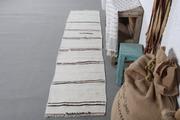Turkish Kilim Pillow, Kilim Cushion Sham, Outdoor Patio Pillow Case, Antique Pillows, Aesthetic Pillow Cover, 16"x16" Beige Pillow Cover
Office Chair Pillow, Kilim Pillow Cover, Home Decor Pillow, Turkish Kilim Pillow, Outdoor Throw Pillow, 16"x16" Blue Cushion Case
16"x16" Beige Cushion Case, Southwestern Pillow Sham, Kilim Pillow Cover, Turkish Pillow, Handmade Rug Seat Pillow Case, Vintage Pillow
Antique Pillows, Handmade Kilim Cushion, 16"x16" Blue Pillow Sham, Vintage Pillow Cover, Kilim Pillow Cover
Turkish Pillow, 16"x16" Green Pillow Cover, Christmas Cushion Case, Crochet Pattern Pillow Cover, Vintage Kilim Throw Pillow, Gift Pillow
Throw Kilim Pillow, Boho Pillow, One Of A Kind Cushion, Outdoor Throw Pillow Case, 16"x16" Beige Pillow Case, Gift Pillow
Decorative Throw Cushion Case, Boho Pillow, Vintage Kilim Throw Pillow, Interior Designer Pillow, 16"x16" Beige Pillow Case
Sofa Bolster Pillow Sham, Boho Pillow, Pillow for Couch, Living Room Throw Cushion, 16"x16" Beige Pillow, Turkish Kilim Pillow
Crochet Pattern Cushion, Bolster Pillow Case, 16"x16" Red Pillow Case, Kilim Pillow Cover, Kilim Pillow, Home Decor Pillow
16"x16" Blue Pillow Sham, Kilim Pillow, Decorative Pillow Case, Patio Pillow Sham, Kilim Cushion Sham, Boho Pillow Sham Cover
Meditation Pillow, Vintage Kilim Pillow, 16"x16" Beige Pillow Case, Handmade Kilim Cushion, Floor Cushion, Home Decor Pillow
Handmade Throw Pillow Sham, Pillow for Sofa, Ethnical Kilim Rug Pillow, Handmade Kilim Cushion, 16"x16" Red Pillow Case
Throw Kilim Pillow, Bohemian Cushion Cushion Case, Turkish Kilim Pillow, Gift Pillow, Colorful Cushion, 16"x16" Blue Pillow Cover
Boho Throw Cushion Case, Vintage Pillow, Handmade Kilim Cushion, 16"x16" Beige Pillow Cover, Vintage Kilim Throw Pillow, Muted Pillow Case
Turkish Bench Pillow, Pillow for Couch, Gift Pillow, Tribal Pillow Cover, 16"x16" Blue Pillow Sham, Vintage Kilim Pillow
Turkish Pillow, Turkish Kilim Pillow, 16"x16" Yellow Cushion Cover, Kilim Pillow, Rustic Cushion Cover, Outdoor Throw Pillow Cover
Kilim Cushion Sham, 16"x16" Blue Pillow Sham, Antique Pillows, Personalized Gift Pillow Pillow Case, Vintage Kilim Throw Pillow
Boho Pillow Sham Cover, Antique Pillows, Turkish Bench Cushion Cover, 16"x16" Beige Cushion, Ethnical Kilim Rug Pillow
Kilim Pillow, Handmade Rug Seat Pillow Cover, 16"x16" Orange Cushion Cover, Gift Pillow, Vintage Kilim Throw Pillow
Neutral Pillow Cover, Kilim Cushion Sham, Interior Designer Pillow, Wholesale Pillow, Boho Pillow Sham Cover, 16"x16" Green Cushion Cover
Turkey is renowned worldwide for its exquisite rugs, woven with a tapestry of culture, tradition, and artistic mastery. These Anatolian carpets, as they are known, have a rich history dating back millennia, evolving from simple floor coverings to intricate works of art that grace homes and spaces with their timeless beauty. Join us as we delve into the world of Turkish rugs, exploring their craftsmanship, styles, and the cultural significance woven into each unique piece.
Turkish rug, also referred to as Anatolian rug, is celebrated for their exceptional quality, intricate designs, and vibrant colors. These rug is more than just decorative pieces; they are cultural artifacts that tell stories of nomadic tribes, ancient civilizations, and skilled artisans who have passed down their techniques through generations.
Exploring the Diversity of Turkish Rugs
Let's uncover the various styles and types of Turkish rug that contribute to Turkey's rich legacy in rug-making:
1. Kilim Rugs
Kilim rug is flat-woven rug that have been produced in Turkey for centuries. They are characterized by their bold geometric patterns and bright colors.
2. Ottoman Court Rugs
Ottoman Court rug is known for their luxury and were produced during the Ottoman Empire, featuring rich colors and intricate patterns. These rug were used in palaces and were often commissioned by the Ottoman sultans, reflecting the highest levels of craftsmanship and artistry.
3. Hereke Carpets
Hereke Carpets are highly esteemed Turkish rug that originated in the town of Hereke, near Istanbul. Hereke Carpets are renowned for their fine weave, intricate patterns, and use of silk and metallic threads. They are considered among the finest and most luxurious Turkish rug.
4. Prayer Rugs
Prayer rug are an important category of Turkish rug, designed to provide a clean and sacred place for Muslims to pray. These rug often feature a mihrab (prayer niche) design, which points towards Mecca, and are adorned with geometric patterns and motifs.
5. Yastik Rugs
Yastik rug is small, rectangular Turkish rug that were traditionally used as cushions or pillow covers. These rug feature intricate designs and are often made with high-quality wool and vibrant natural dyes, making them popular among collectors.
6. Antique Turkish Rugs
Antique Turkish rug encompass a wide range of styles and designs, reflecting the diverse cultural influences and artistic traditions of Anatolia. These rug is prized for their craftsmanship, historical significance, and the stories they tell about the people and regions where they were woven.
The Art of Turkish Rug-Making
Turkish rug-making is a labor-intensive process that involves skilled craftsmanship and meticulous attention to detail. The art of weaving Turkish rug has been passed down through generations, with each region of Turkey producing rug that reflect its unique cultural identity and artistic style.
Turkish rugs, or Anatolian carpets, are more than just floor coverings; they are expressions of artistry, culture, and history. From the bold geometric patterns of Kilim rug to the luxurious silk threads of Hereke Carpets, each Turkish rug tells a story and carries with it the spirit of its creators. Embrace the beauty and heritage of Turkish rugs in your home, and let these exquisite textiles enhance your space with their timeless elegance. Embrace the artistry and craftsmanship of Turkish rug in your home decor, and let these timeless pieces tell their stories for generations to come. By understanding the tradition and cultural significance behind Turkish rug, you can appreciate their beauty and value as more than just decorative items—they are reflections of a rich and storied heritage.
